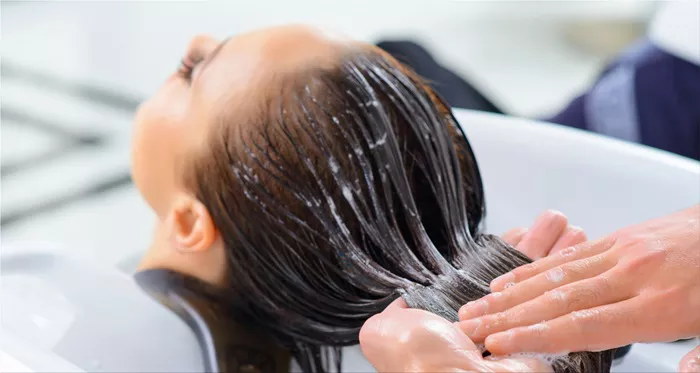Heat styling tools like flat irons, curling wands, and blow dryers can transform hair into sleek styles or voluminous curls, but frequent use without proper precautions can lead to heat damage. This damage manifests as dry, brittle, and frizzy hair, often accompanied by split ends and breakage. However, the good news is that with the right care and patience, it is possible to repair heat damaged hair and restore its health and vitality.
Understanding Heat Damage
Heat damage occurs when excessive heat weakens the protein bonds in your hair, leading to structural changes that result in loss of moisture and elasticity. This damage can be exacerbated by factors such as high heat settings, frequent heat styling, and inadequate protection with heat protectants.
Signs of Heat Damage
Identifying heat damaged hair early is crucial for effective treatment. Look out for these common signs:
Dryness: Heat damaged hair often feels excessively dry and lacks moisture.
Brittleness: Hair becomes fragile and prone to breakage, especially when combing or styling.
Split Ends: Ends of the hair appear frayed and split.
Loss of Elasticity: Hair loses its ability to stretch without breaking.
Dullness: Hair may lose its natural shine and appear dull and lifeless.
See also: How to Make Your Hair Straight and Silky
Steps to Repair Heat Damaged Hair
1. Assess the Damage
Start by assessing the extent of the damage. This will help you determine the best course of action and set realistic expectations for recovery.
2. Trimming
Begin with a trim to remove split ends and prevent further damage from spreading up the hair shaft. Regular trims every 6-8 weeks can help maintain healthy hair growth.
3. Deep Conditioning Treatments
Introduce deep conditioning treatments into your hair care routine. Look for products with moisturizing and repairing ingredients such as keratin, argan oil, shea butter, and protein.
4. Moisture Restoration
Use moisturizing shampoos and conditioners formulated for damaged hair. Avoid products containing sulfates and opt for those with hydrating properties.
5. Heat Protectants
Always apply a heat protectant before using heat styling tools. This creates a barrier that minimizes damage and helps retain moisture.
6. Reduce Heat Exposure
Limit the use of heat styling tools and opt for heat-free styling methods such as air drying, braiding, or using rollers.
7. Nutrition and Hydration
Maintain a balanced diet rich in vitamins and minerals essential for hair health, such as vitamins A, C, D, E, and biotin. Drink plenty of water to keep your hair hydrated from the inside out.
8. Avoid Overprocessing
Minimize chemical treatments such as coloring, perming, or relaxing until your hair has fully recovered.
9. Protective Styling
Embrace protective hairstyles that minimize manipulation and reduce exposure to environmental stressors.
10. Patience and Consistency
Repairing heat damaged hair takes time and consistency. Be patient with your hair care routine and continue to follow these steps diligently.
Conclusion
While heat damaged hair can be a frustrating setback, it is not irreparable. By implementing a regimen focused on moisture, protection, and gentle care, you can gradually restore your hair’s health and vitality. Remember, prevention is key, so practice mindful styling techniques and prioritize hair care products that nourish and protect. With dedication and the right approach, you can achieve healthy, beautiful hair once again.
FAQs
How do you fix heat damaged hair?
Fixing heat damaged hair requires a multi-faceted approach to restore its health and vitality. Here are some steps to follow:
Deep Conditioning Treatments:
Use deep conditioning masks and treatments regularly to replenish moisture and nutrients. Look for products containing ingredients like shea butter, argan oil, coconut oil, keratin, or hydrolyzed proteins.
Protein Treatments:
Protein treatments can help rebuild the hair’s structure by strengthening the hair shaft. Use them according to your hair’s needs, typically every 4-6 weeks.
Regular Trims:
Get regular trims to remove split ends and prevent further breakage. Aim for a trim every 6-8 weeks.
Limit Heat Styling:
Reduce the use of heat styling tools. When you do use them, ensure you apply a heat protectant spray or serum to minimize damage.
Gentle Hair Care:
Handle your hair gently, especially when it’s wet. Use a wide-tooth comb to detangle and avoid rough brushing.
Moisturizing Shampoos and Conditioners:
Use sulfate-free shampoos and conditioners that are formulated to hydrate and nourish your hair.
Avoid Chemical Treatments:
Limit the use of chemical treatments like coloring, perming, or relaxing, which can exacerbate damage.
Natural Oils:
Apply natural oils like coconut oil, olive oil, or argan oil to your hair to lock in moisture and add shine.
Balanced Diet:
Maintain a healthy diet rich in vitamins and minerals essential for hair health, such as vitamins A, C, D, E, and biotin.
Hydration:
Drink plenty of water to keep your body and hair hydrated.
Professional Treatments:
Consider professional salon treatments like keratin treatments or Olaplex, which can help repair and strengthen damaged hair.
How long does it take for hair to repair after heat damage?
The time it takes for hair to repair after heat damage varies depending on the extent of the damage and how well you care for your hair. On average, you can start to see improvements in a few weeks with proper care, but significant repair may take several months. Here is a general timeline:
Immediate Care (1-4 weeks):
You may notice immediate improvements in texture and moisture levels by using deep conditioning treatments and reducing heat styling.
Short-Term Recovery (1-3 months):
With consistent deep conditioning, protein treatments, and trims, you will begin to see a noticeable reduction in split ends and breakage.
Long-Term Recovery (3-6 months and beyond):
Over several months, as you maintain a healthy hair care regimen, new hair growth will be healthier, and the overall condition of your hair will improve significantly.
Remember, patience and consistency are key when repairing heat damaged hair. With time and the right care, you can restore your hair’s health and vitality.
You May Be Interested In

